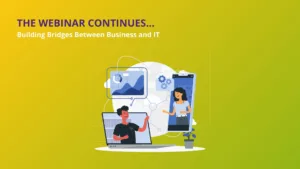Understanding Agile Management
You’ve probably heard the term before: agile. It has been a buzzword among managers for quite a while now, primarily applied in the project management field. Adopting agile practices has significantly increased in popularity over the last few years. According to the 15th Annual State of Agile Report, 97% of organizations have begun practicing agile.
Managing business processes can be done in many ways. Traditional methods require rigid processes, set in stone, so to speak. However, in practice, processes are seldom always the same. Many conditions influence a process. So, perhaps an agile approach to process management isn’t a bad idea? Let’s weigh the pros and cons of agile process management.
Agile Process Management Benefits
Whether we call it Agile Process Management (APM), Flexible Process Management, Adaptive Process Management, or something else, we are talking about the ability to make changes as necessary. Here are some significant benefits to this approach:
- Increased Agility: APM allows your business to adjust any process quickly in response to changes, whether they stem from an internal shift or external market dynamics. This agility can provide a significant competitive advantage, enabling your business to seize opportunities and mitigate risks more effectively.
- Improved Efficiency: By allowing for real-time adjustments, APM can help eliminate bottlenecks and reduce waste. This leads to improved operational efficiency and productivity, thereby driving better business outcomes.
- Enhanced Customer Satisfaction: With APM, your business can easily adapt to meet changing customer needs and expectations. This improves customer satisfaction and loyalty, which are crucial for growth and success in today’s customer-centric business landscape.
- Improved Accuracy: Adapting to external change also increases the accuracy of your processes, ensuring that all required data is processed accurately, efficiently, and within a given timeframe.
Challenges, Anyone?
Now you might think: great, where do I start? However, before we dive in, let’s consider the requirements and potential challenges at hand. Becoming adaptive to change is not something that can be done overnight, nor within every organization. Change requires resources: money, time, expertise, and even technology, with expertise being the most crucial.
Changing a process is a process itself. It requires careful thought and consideration. Deploying changes recklessly can cause resistance and potentially lead to more problems than benefits. It’s crucial to conduct a pros and cons analysis of the changes you want to make. Do the benefits outweigh the cost of change? Another important question to ask yourself: does my new idea have any implications for the process further down the line? Are there any subprocesses that could be affected? Setting up a change process can greatly benefit the outcome of your APM practices and keep employees happy, which is, of course, your main goal.
Technology: An APM Success Driver
Despite the important considerations of agile process management, and recognizing that it’s not for all organizations, we do recommend considering it. Thanks to today’s technology, adopting APM has become more realistic than ever.
Making adjustments on the fly requires your employees’ input. They are “in the field” and encounter the need for changes firsthand. For APM to be successful, a way to keep them engaged is absolutely necessary. Citizen development offers a significant opportunity here. Many software platforms allow business people to make suggestions, draft designs, and help IT develop successful applications. This not only keeps your employees engaged and feeling part of the team but also greatly increases software adoption in general.
In addition to allowing business people to design changes, you need a platform that can manage implementing change flexibly. Often systems fail when trying to implement changes while running an instance. Technology like InstantChange™ provides this capability. Once the need for change is final, having software that can implement change without repercussions is a must.
In Conclusion
In conclusion, Agile Process Management isn’t just a passing phase, it’s a crucial approach for businesses looking to keep pace in a rapidly changing world. The impact of technology in this scenario is significant. It smoothens workflows, boosts collaboration, and helps react faster to evolving market trends.
Embracing Agile methods, coupled with the right technology, equips your business with a competitive edge in an increasingly dynamic environment. As we navigate the future, it’s important to fully adopt these practices and nurture a corporate culture that’s ready to learn, adapt, and grow. Remember, transitioning to Agile isn’t a sprint, but a marathon, and it offers substantial rewards in the long run.
Want to learn more about implementing APM in your organization, or do you need a sounding board for any other process-related topics? Feel free to get in touch. We would love to share thoughts with you on how we can all become more efficient.



